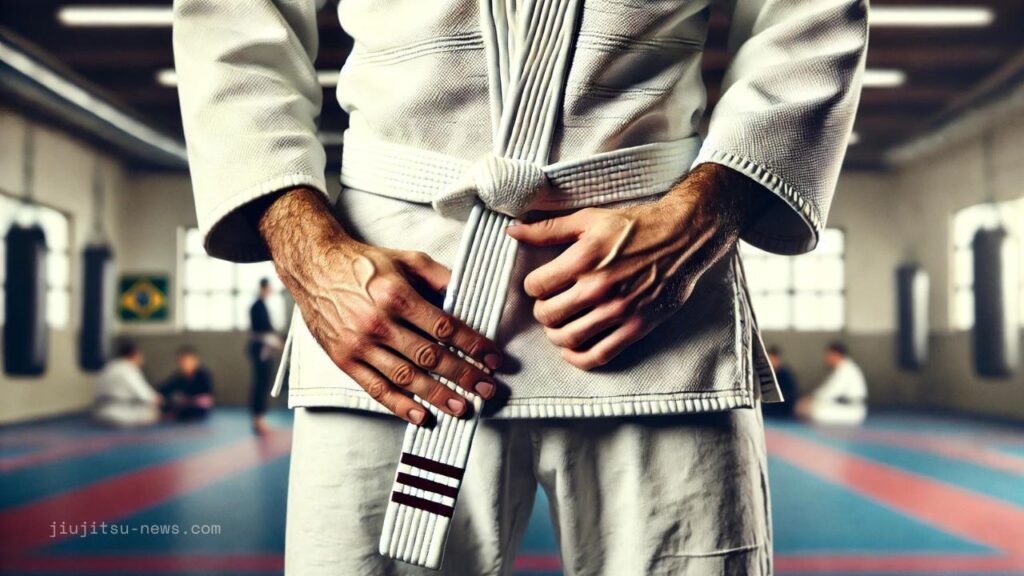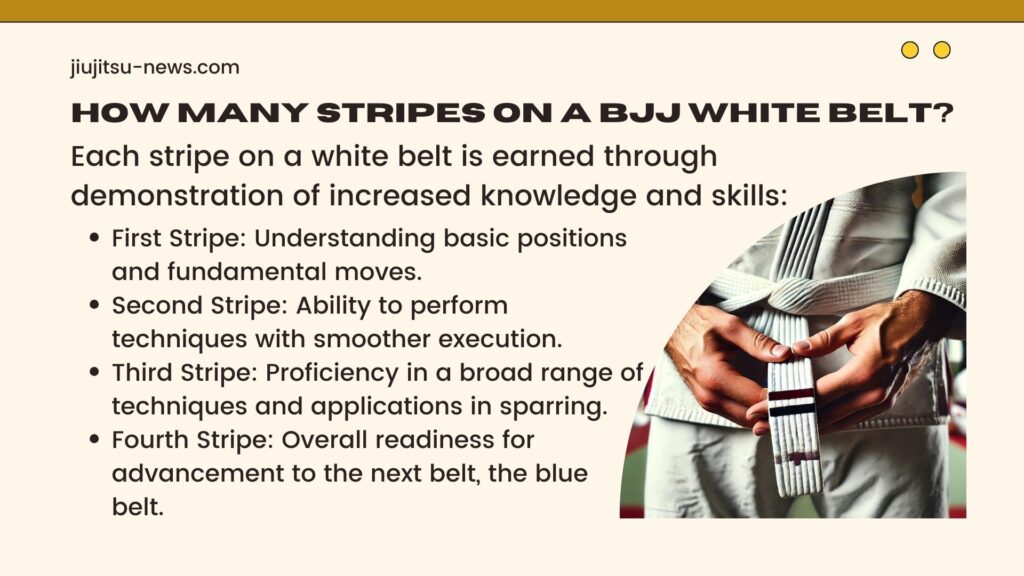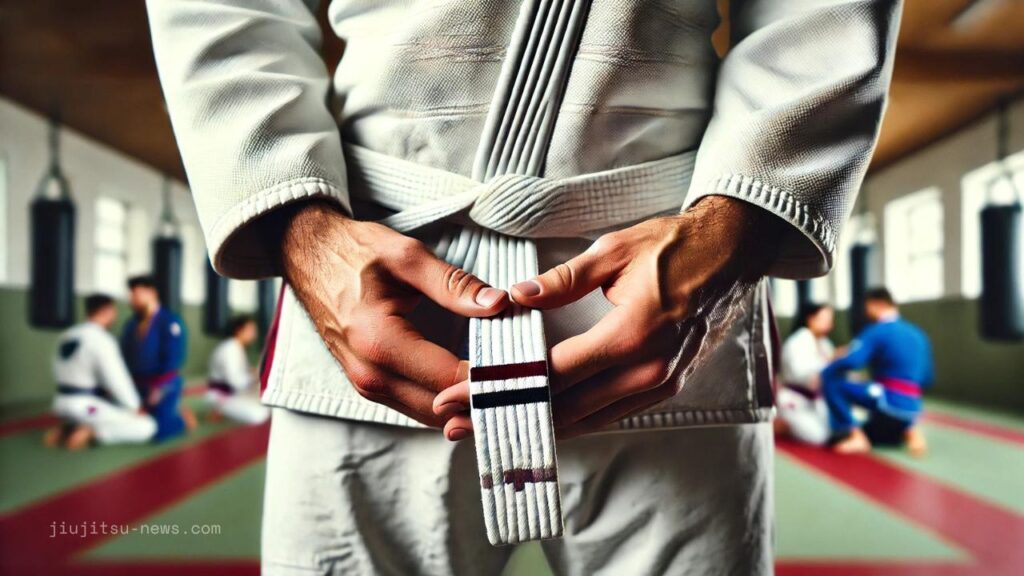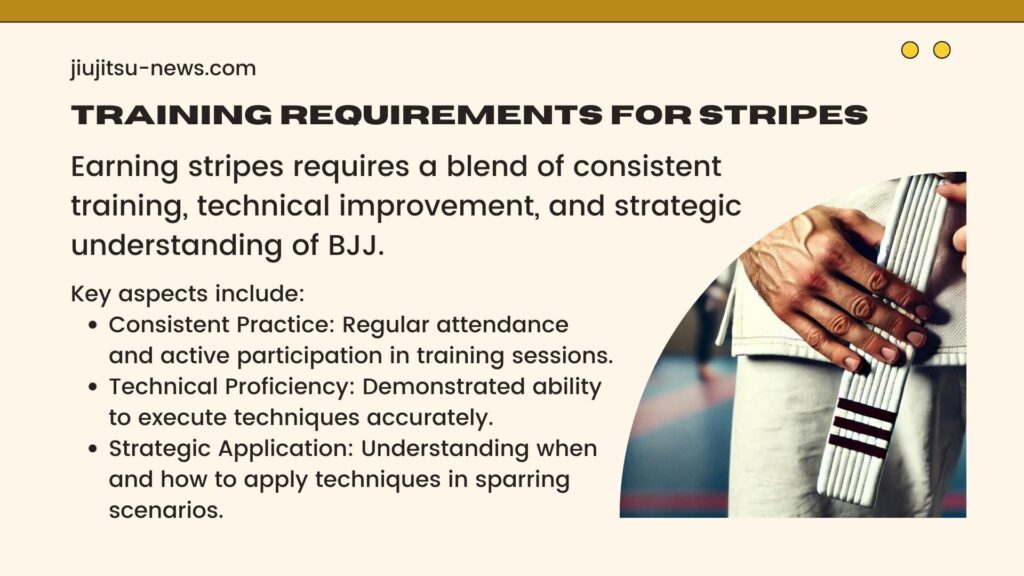
The white belt marks the start of a practitioner’s journey in Brazilian Jiu-Jitsu. Like others, this rank is subdivided into four stripes, representing progression in knowledge and skills.
Earning stripes in Brazilian jiu-jitsu provides learners with clear goals and boosts motivation as they train.
Continue reading to learn more about BJJ white belt stripes’ significance, the process for achieving them, and more!
BJJ White Belt Stripes Meaning and Significance

In BJJ, white belt stripes indicate a student’s growth and achievements within the art.
Each stripe is awarded as a token of the learner’s commitment, understanding of techniques, and deepening appreciation for the discipline.
They act as benchmarks in a student’s journey, marking their gradual mastery and readiness to take on more complex aspects of Brazilian jiu-jitsu.
The journey through the white belt stripes in BJJ is inspirational and challenging, requiring increased proficiency and a better grasp of fundamentals with each stripe.

How Many Stripes on a BJJ White Belt?

A white belt in Brazilian Jiu-Jitsu can have up to four stripes, each signifying a level of achievement recognized by the instructors.
To earn each stripe, students must dedicate themselves to regular practice, improve their technical skills, and meet the instructor’s specific criteria.
These criteria often include demonstrating a solid understanding of BJJ principles and applying them effectively in sparring scenarios.

White Belt BJJ Stripes Requirements

Earning stripes on a white belt in BJJ recognizes a student’s progress and dedication to the sport.
Here are the general requirements for each stripe at the white belt level:
- First Stripe: Demonstrates a beginner’s understanding of core BJJ concepts and techniques, such as basic positions (closed guard, half guard), fundamental moves (hip escape, bridge), and essential submissions (armbar, triangle choke).
- Second Stripe: Requires a more profound familiarity with BJJ fundamentals, smoother execution of basic techniques, and an introduction to more complex skills like sweeps and additional submissions.
- Third Stripe: At this stage, students should be proficient in a broader range of techniques, including advanced positions and movements, and be able to apply these techniques effectively in sparring.
- Fourth Stripe: Indicates readiness to transition to the blue belt, showcasing comprehensive knowledge and ability in techniques and sparring strategy.

BJJ Stripes White Belt: How Long?

Depending on their capacity to meet the expectations, it may take anywhere from three to six months for someone to achieve each stripe on a white belt.
Conclusion

Achieving each stripe on a white belt in Brazilian Jiu-Jitsu is a significant milestone that reflects a student’s commitment, skill development, and understanding of the sport.
Each stripe earned is a step forward in the BJJ journey, bringing the practitioner closer to mastering this complex and rewarding martial art.
The path through the white belt stripes is designed to build a solid foundation, ensuring that each student develops the necessary skills and confidence to progress through the ranks of BJJ.
Test your Brazilian Jiu-Jitsu knowledge of the BJJ White Belt Stripes. Start the quiz now!



